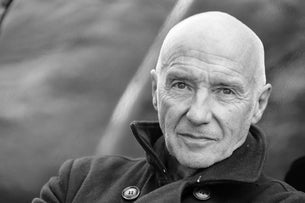Chasing Sounds
“In the early Ultravox days, we kind of had to invent how we performed live with the technology."
By the time the wider world discovered Midge Ure, at his joining New Wave electro-pop band Ultravox, the Scottish multi-instrumentalist had already had a successful pop career with Slik, had turned down the opportunity to front The Sex Pistols and formed another electro-pop group called Visage, which eventually included keyboards player Billy Currie, who invited Ure to join his former band Ultravox on the departure of frontman John Foxx. With them, Ure had several huge hits, most notably 1981's Vienna, and he would record five albums with them before going solo in 1986, reuniting with them again in 2009 and recording and releasing a new album, Brilliant (Chrysalis/EMI), last year.
Ure today has his recording studio set up in a lightweight office building based down the back of his garden at his home just outside Bath in UK county Somerset and uses a DAW system running Logic or ProTools on Apple Macs, depending on the requirements of the project in hand, with MOTU 828 audio interfaces and an AMT8 MIDI Interface. Ure has an M-Audio MIDI fader desk and NHT Pro monitor system.
“You know, it's something I've always had,” he explains, “ever since I generated my first income from playing music back in the early '80s. The first thing I ever did was build my own studio, 'cause I figured out that, with your own tools, when it wasn't as easy to have your own studio, nobody could stop you from making music then. You know, you didn't have to depend on being signed to a major label or depend on some guy in the accounts department deciding whether you were worth keeping or not, so, just the idea of being self-sufficient. It's as important to me to have the recording tools as it is to have the guitars. I was working today with a couple of guys from a German band who flew over to do some writing with me, and they were asking me what my studio was like and of course it was big analogue tape machines and Harrison desks and all of that stuff. Now it's just a handful of computers really.”
Back in the day, as with most bands utilising early synthesisers, Ultravox travelled with a huge barrage of synths, Currie for instance typically running an ARP Odyssey, a Yamaha CP70 electric piano and SS30 string machine, CS80 synthesiser, a PPG Wave 2.2 digital synth and a Prophet T8. While no one in Ultravox was necessarily researching better ways to synthesise sounds, they were pushing the instrument manufacturing community to ponder how to do it, all of which led to the digital revolution of which we are heirs.
Don't miss a beat with our FREE daily newsletter
“In the early Ultravox days, we kind of had to invent how we performed live with the technology,” Ure admits, “'cause the technology was so incredibly basic. It was pre-MIDI, where one machine can talk to another machine just via one cable – it was before any of that could happen, so we couldn't get the drum machine to talk to the MiniMoog, and couldn't get the MiniMoog to talk to whatever. So we had to adapt everything that we had and figure a way of making these things work, both in the studio and live. The soundchecks that we used to do back then took five hours, which was three times longer than the show itself!
“So we kind of pushed manufacturers into a situation where we'd say, 'We need to be able to do A, B and C,' and then they'd go off and think about it and try and help us, so I suppose we were kind of data-testing what they were trying to build back in the early days. On the last Ultravox tour last year, rather than going out with the synthesisers that we did on the last show in 1986, we each have a little laptop on stage and they're stacked full of all the soft synthesisers and all the sounds that we need, and we've now narrowed it down to five keyboards on stage – and our keyboards player Billy has three of them, I've got one and Chris [Cross] the bass player's got one – and the technology we use now is so microscopic compared to what we used to lug around the world back in the old days.
“It's kind of like going on stage with a complete recording studio, 'cause you've got digital desks, your monitor desk's all digital, so when you put your monitors on, you should get a very, very good-sounding mix. You don't have to kind of rebalance it every day. You walk in and it's all memory, it's all patched and bang, there comes the song in your head – you're all set to go. So it's infinitely easier in that respect, but the problem being laptops were never designed to go on the road. They've got flimsy little cables coming out of them and nobody trusts that stuff – they're not rock'n'roll.”
Midge Ure will be playing the following dates:
Thursday 18 April - Kedron-Wavell Services, Brisbane QLD
Friday 19 April - Billboard The Venue, Melbourne VIC
Saturday 20 April - Factory Theatre, Sydney NSW
Wednesday 24 April - Shoppingtown Hotel, Melbourne VIC
Friday 26 April - The Gov, Adelaide SA
Saturday 27 April - The Charles Hotel, Perth WA
Related Gigs










